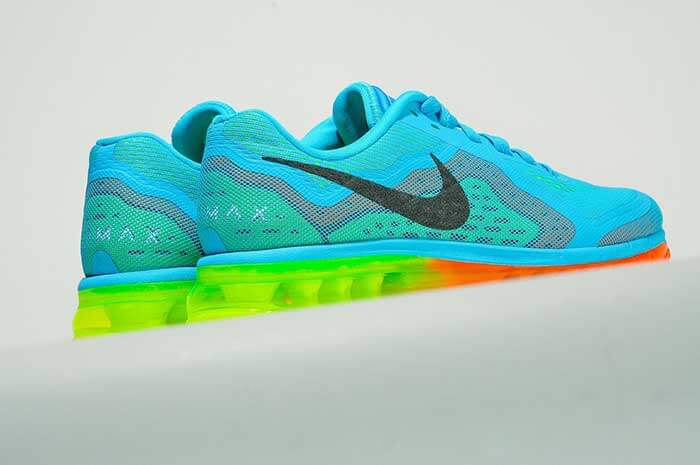Everyone’s got a strategy these days, even pizza delivery guys. But how many of you have pondered the «what is a branding strategy?» question? We have.
If you look at any major successful company, you will find that there’s not much they have that cannot be (or couldn’t have been) done by others.
What, Coca-Cola sells carbonated caffeine and sugar-containing soft drinks? Big deal, there are millions of similar drinks sold everywhere in the world.
What, Mars Inc. produces and markets nougat and caramel chocolate bars? It’s not like there hasn’t been anything quite like that before. With a $10,000 investment, you could easily set up a product of those in a couple of months.
What, people are paying $100 for a pair of Nike running shoes which cost $10 to produce and another $10 to market? Insanity, you might say because there are hundreds of similarly made running shoes which cost twice as less as Nike but people just don’t want them for some reason.
As you might have already guessed, the difference between Coca-Cola, Mars, Nike etc and other no-name companies is the BRAND. Coca-Cola is a worldwide recognizable brand. So is Mars and so is Nike. Your company or business is not (yet).

But there was a time when these companies were like you – just starting, without a name or brand. How did they manage to become what they are now? What did they have in common? What did they do and what didn’t?
These are the questions we’re about to answer in this article.
One Important Thing Before We Start
Now, before we go straight to the «What Is a Branding Strategy?» question, it’s imperative that we settle on one little thing.
Brands are built around great products, or services. Never the other way around.
This essentially boils down to a simple conclusion: make sure you have a great product first, before building a brand. If your product (or service) sucks in the first place, it would be merely impossible to create a brand around it. Even if you manage to do it somehow, it won’t last long.
Invest as much time and effort as possible in making an exceptional product and delivering outstanding services. If you do, the rest will come easy.
Got that? Cool, let’s moving on.

What Is a Branding Strategy? Definition
According to a popular definition from Hubspot, the branding strategy is a long-term plan for the development of a successful brand in order to achieve specific company goals.
This definition brings us to a few very important conclusions:
1. First of all, your branding strategy is essentially a written plan, i.e. a sequence of actions and goals (interim and final ones), meaning you will have to sit down and actually write it!
2. Your branding strategy has to be aligned with your company’s vision and mission statements, strategy and overall goals (more useful information on the subject – «Understanding Website Marketing Strategy: Why You Should Have One» and «What Is a Vision Statement and How Is It Different from a Mission Statement?»).
3. Branding strategy is created to be relevant not just today and tomorrow but in the foreseeable future (5-10 years at least), if not forever.
Based on this valuable information, we can outline a few important steps (you can cabal them guidelines) you need to undertake before you proceed to creating an actual branding strategy.
Building a Branding Strategy – Preliminary Checklist

For a smoother and more organic branding strategy building process, make you go through these steps first.
1. Define your goals
It may not be the most time-consuming step but it is, certainly, the most important. Take a few hours to elaborate on the subject of your company goals and how they align with your branding goals.
Ask yourself these questions:
- Why am I creating this brand?
- What do I hope to achieve by launching this new brand?
- What results do I view as a success?
2. Don’t get caught in a short-term trap
Yes, it’s very important to keep track of the current day-to-day events. But not with the brand. Think of it in this way – brand tells you not where you are now but rather where you want to be.
Same thing with the customers – your brand should not just tell them and give them the obvious. It should present them a better version of themselves, just like we mentioned in the previous article – “What is a Brand? Everything You Need to Know About a Brand Before Building One“.
Try to think of where you want your brand to go. Ask yourself these questions:
- What will become of my brand in a year? Five years? Ten years?
3. Remain flexible
No matter how far you look into the future and have everything planned out, life will always come up with strange ways to alter your plans. Set your goals in a way that will allow you to modify them according to the current situation.
Now that we’ve covered the preparation process, let’s move on to the actual branding strategy planning process.
5 Essential Branding Strategy Components
Get a piece of paper, take your pen, then put them away, open a text editor on your laptop and get down to planning what will eventually become your brand strategy road map.
This approach is universal and can be applied for positioning a new product:
- for small business
- for nonprofit organizations
- for b2b business
- for local and national market
1. Purpose
We’ve already covered that in the previous section. Your brand should have a purpose, no matter how small or big it is. And that purpose should be well-aligned with the overall business strategy, mission, and vision statements.
«Of course, the purpose of any business is to make money,» you might say. Well, yes and no. Take a look at the purpose of a popular company/brand – these examples show how deep the obvious (at first sight) things go.

- Coca-Cola (view in full here)
- Mission
- to refresh the world
- to inspire moments of optimism and happiness
- to create value and make a difference
- Vision
- People: Be a great place to work where people are inspired to be the best they can be.
- Portfolio: Bring to the world a portfolio of quality beverage brands that anticipate and satisfy people’s desires and needs.
- Partners: Nurture a winning network of customers and suppliers, together we create mutual, enduring value.
- Planet: Be a responsible citizen that makes a difference by helping build and support sustainable communities.
- Profit: Maximize long-term return to share-owners while being mindful of our overall responsibilities.
- Productivity: Be a highly effective, lean and fast-moving organization.
And you say «a refreshing drink»… These things don’t just come up by themselves – they actually differentiate a brand from a no-name company.
2. Consistency
Once you’ve settled on a certain purpose and crafted your vision and mission statements, stay consistent with them.

Take Starbucks as an example – no matter where in the world you enter a Starbucks cafe (be it NYC, Toronto, Los Angeles, San Francisco, Sydney, Hong Kong, or a small town in Malaysia), the interior design, counters, personnel, service, and coffee will be exactly the same.
That’s a thing with brands in the international business – they always stick to what makes them a brand.
Something for you to consider:
- Do your best to carry over your brand message to every medium you use – name, logo, slogan, design, website, social media, YouTube etc
3. Emotion
Brands (just like products and everything else) are made BY people and FOR people. And people are very humble and emotional beings – that’s why you need to appeal to their emotions in the first place.
If you take any successful brand, there’s always an emotion underneath it. Something universal that anybody can relate to.
Take a look at Harley Davidson’s brand strategy execution – they have perfected this technique. Anytime you hear «Harley Davidson», you immediately think of rough, tough, bearded men in leather pants and jackets living by their own rules challenging the «normal» society.

It wasn’t like that all the time – in fact, it was a conscious step undertaken by the company’s management in order to increase brand awareness and recognition.
Building strong brands suggests appealing to people’s emotions. Find that one thing in your brand that is universal enough to appeal to anyone but, nevertheless, powerful enough to establish that firm emotional connection.
4. Involvement
It’s very important to know how to create a brand that suggests some form of involvement from its followers. What I mean by this is the desire to talk about the brand and help spread it by word-of-mouth promotion.
The best example I could think of is that of Apple. Have you ever wondered why they named their devices «i-something»? To substitute the names of real-life devices so that every time you mention using your phone in your speech, you’d say «gotta check my iPhone». You don’t say «gotta check my Huawei», do you?
Same thing with Google, whose name has even become a verb – google it, if you don’t believe me.
Every time people mention these names, they help to promote and advocate the brand. It’s a great strategy worth being in your marketing plan.
Of course, it’s impossible not to mention «Sent from my iPhone» thingy in your emails. Makes sense now?

5. Loyalty
This is the best thing a brand can earn – loyalty. Through the continuous development, hard work, and experimenting. If there’s something you should really promote, that is your brand loyalty.
First, find the early adopters – people who (for some reason) dig your products and are ready to buy them. Make sure these people are satisfied enough and encourage them to spread the good word about your brand.
Then, the next wave will come in – people who like to try something new once in a while. Having heard of your brand from the early adopters, they decide they want to try it. Again, your brand strategy goals here are the same – to keep them satisfied.
Finally, if you’ve been successful on the previous stages, the main flow of customers will come in – these are regular people who buy products based on the brand. Their being common doesn’t mean they’re easier to please. Give your best to go beyond their expectations.
If you’ve done it all, you can go global – there are no more guidelines left for you.
Conclusion
That’s it! You’ve made it to the end of the article – now you’re ready for your own branding strategy project. You’ve got the methodology, framework, and the tools for making your own branding decisions.
I hope this guide helps you build your own brand in 2017, and serve a template for your success. If you ever feel like you need professional advice, don’t be afraid to contact an Internet marketing agency for help.
The right thing to do would be share this article with your friends on the social networks – just click on one of the icons of social media, it’s that easy.
If you have further questions on the subject, please write them in comments – I’ll be glad to answer.





Comments0